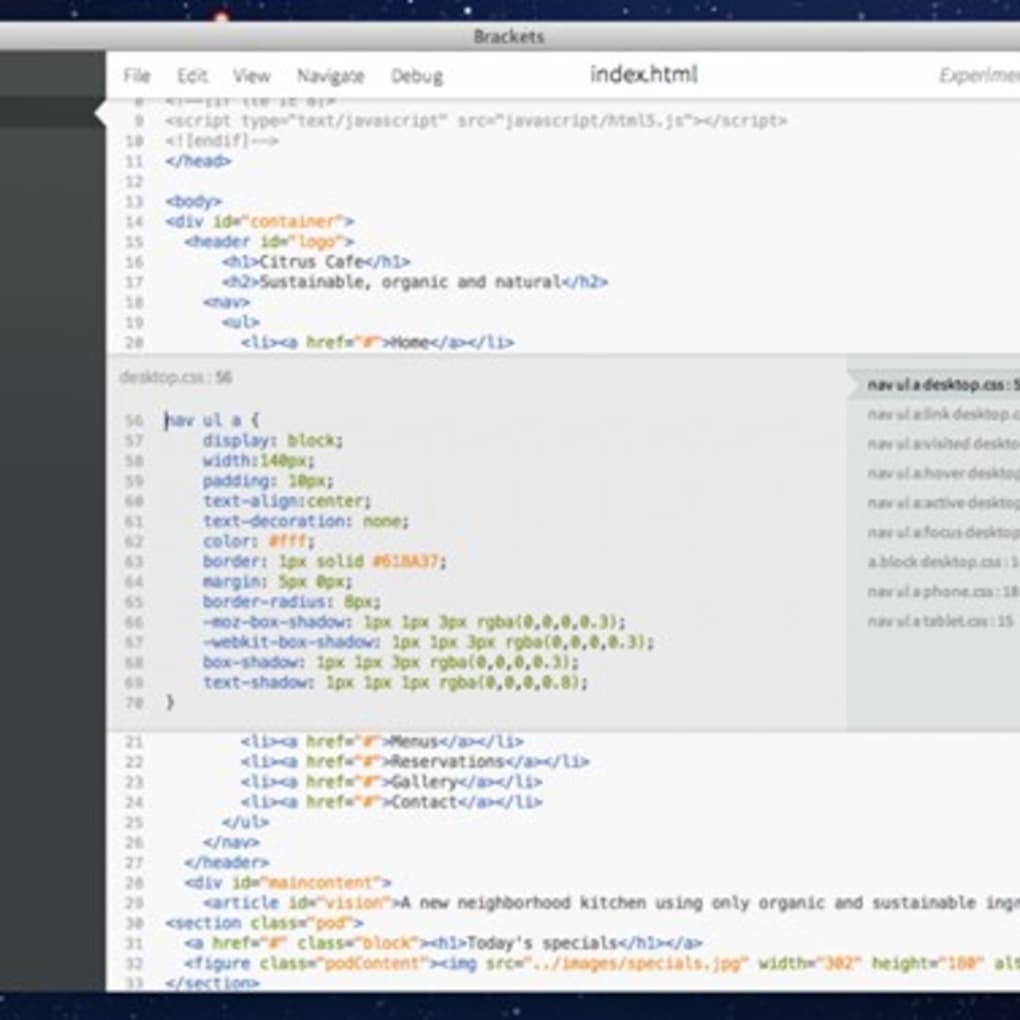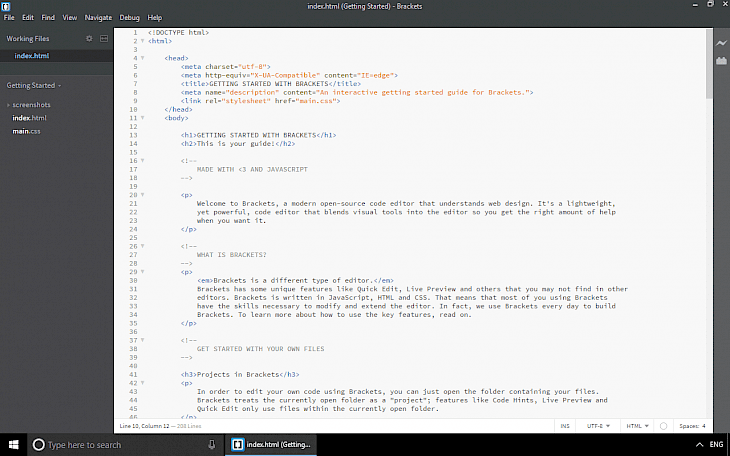

Entirely homegrown within the community, it is also the largest engineering effort put into Brackets since 2015 (including Adobe). Phoenix marks the first large-scale, truly independent release from the Brackets community. It's been over four months since the first community release of Brackets 2.0, mainly a migration release from Adobe. Phoenix has been under active development by the Brackets continued community for the past six months. Phoenix brings all the powers of Brackets and its Extensions to web browsers no install needed. We would like to introduce the newest member of the brackets community projects, Phoenix Code, generally available at. However, those who focus on javascript and Node.js will tend towards Visual Studio code.Hello all, We hope you're all doing well.

With the same functionality as Adobe Edge (not active anymore), “Brackets” is available to run on Windows, Mac, and Unix).īecause Brackets is programmed in HTML, CSS, and Javascript, plugins for extending brackets hang low and the code editor had a decent list of plugins that are installed directly from brackets early on.Īlthough the developer’s team behind Brackets recommends Microsoft Visual Studio Code as a successor, the live preview feature of brackets is not so easy to beat. Nevertheless, the project was on GitHub, hence was picked up by the open-source developers and is still active as a fork. However, later Adobe discontinued support for Brackets in 2021. “Brackets” was developed by Adobe and can be considered a successor of AdobeEdge Code. Steps to install Brackets Code editor on popular Debian 11 Bullseye Linux to start coding and having a live preview in the Chrome browser.


 0 kommentar(er)
0 kommentar(er)
